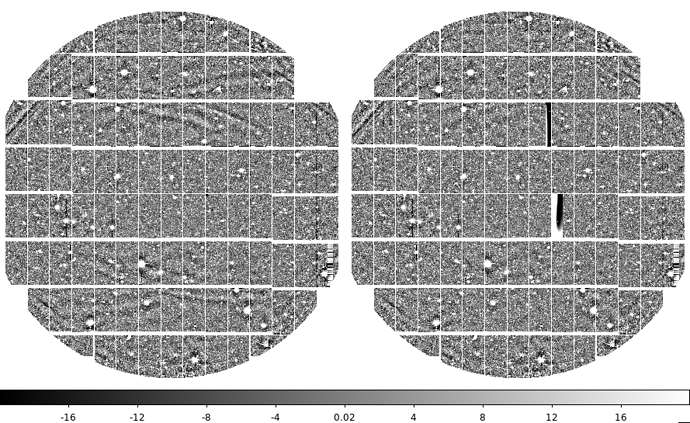HSC has had some features known as “The Eye of Y” in the y-band images due to LEDs used in the instrument encoders. DM-12979 introduces some code to remove these features. Open-shutter darks were taken one cloudy night, and Sogo Mineo (NAOJ) wrote some code to apply them to science frames. Because the feature moves as a function of instrument rotator angle, this required a lot of darks, but they have been compressed down to about 600 MB (and will be automatically uncompressed as required for application to the science frames). This correction is active by default (but can be disabled using a config parameter). If you’re processing HSC y-band data, you’ll need to download the darks and put them in your calib directory under a STRAY_LIGHT subdirectory, e.g.:
pprice@tiger-sumire:/tigress/HSC/HSC/CALIB-LSST-20170105 $ ls STRAY_LIGHT/
README.txt ybackground-034.fits ybackground-069.fits
ybackground-000.fits ybackground-035.fits ybackground-070.fits
ybackground-001.fits ybackground-036.fits ybackground-071.fits
ybackground-002.fits ybackground-037.fits ybackground-072.fits
[...]
Here’s an example before/after image:
Left: visit=12979 without any correction. Notice the features in the second, third, sixth and seventh rows of detectors (background subtraction reduces the features to positive/negative ripples). Right: the same exposure with the correction. Some amplifiers (notably on ccd=33 and ccd=43) aren’t corrected because those amps died before the open-shutter darks were taken, so we don’t have a correction there; they’re masked.
Thanks again to Sogo Mineo for his hard work on this!
We’ll want to rebuild the fringe frames with this correction applied.
As a bonus, I’ve added to pipe_drivers a script that will generate images of the entire focal plane, visualizeVisit.py. As an example usage, here’s how I created the above “after” image:
$ visualizeVisit.py /tigress/HSC/HSC --rerun price/dm-12979 --calib /tigress/HSC/HSC/CALIB-LSST-20170105/ --id visit=11736 --cores 12